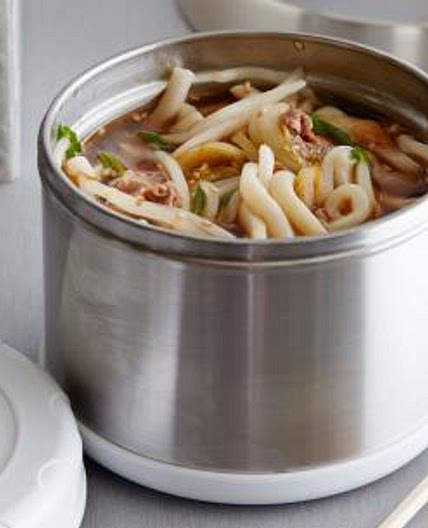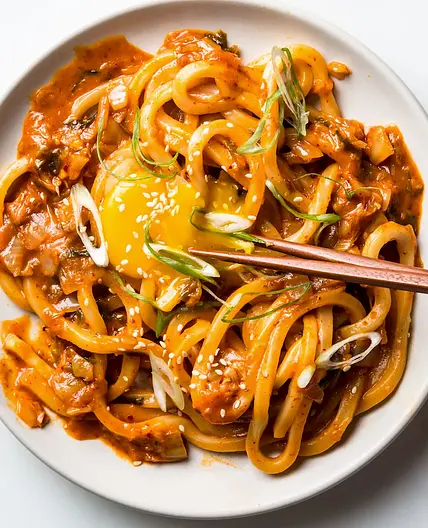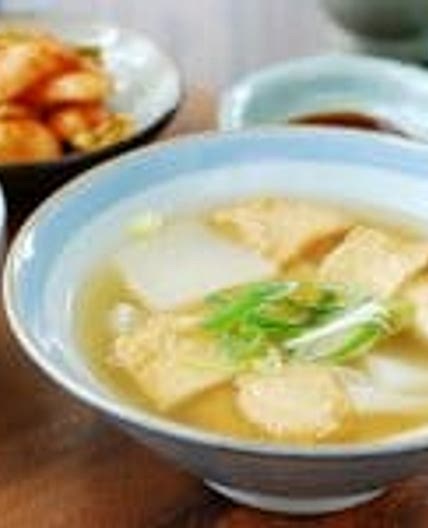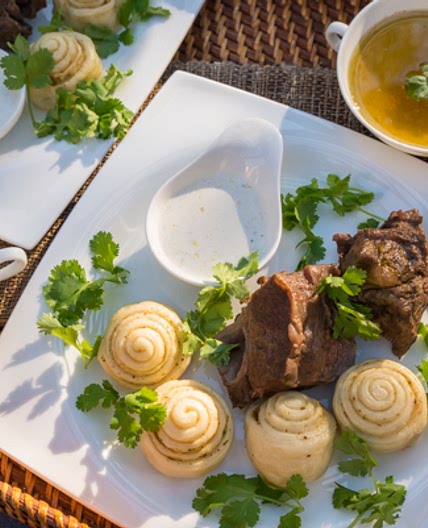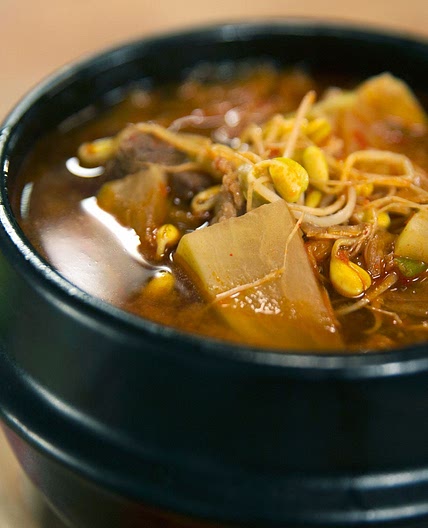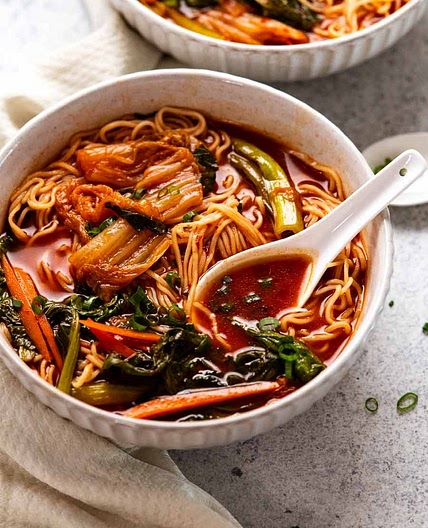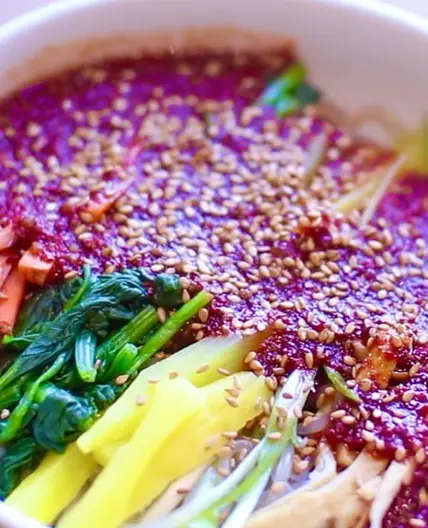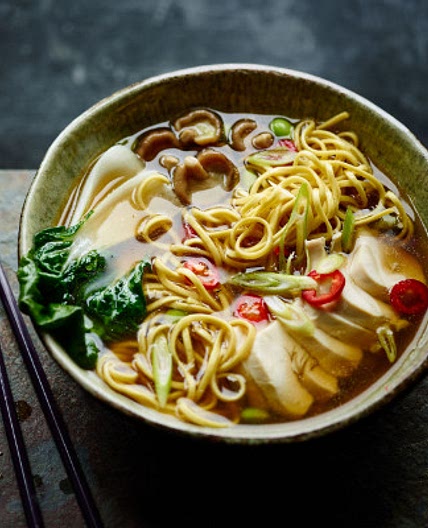Cold noodles in beef broth (Mul naeng myun) Recipe
Leave a note
By latimes.com
Cold noodles in beef broth (Mul naeng myun) Recipe
Instructions
Cook:1h 30min
Updated at: Sun, 21 Dec 2025 19:33:03 GMT
Nutrition balance score
Uh-oh! We're unable to calculate nutrition for this recipe because some ingredients aren't recognized.
Ingredients
4 servings
1 poundbeef brisket
1 to 1 1/2 inches thick
3 clovesgarlic
peeled and smashed
0.5 ounceginger root
knob, peeled, and sliced into discs
2green onions
cut into thirds
1serrano chile
5 tablespoonsdistilled vinegar
divided
1 ½ tablespoonssoy sauce
2 cupsdongchimi liquid
from a large container of dongchimi kimchi
2 teaspoonssalt
2 ½ teaspoonssugar
plus additional for garnish
1 x 22 ouncebuckwheat noodles
package, korean, or arrowroot
1asian pear
peeled, cored and cut into quarters, then thinly sliced lengthwise
1 recipedaikon and cucumber
quick-pickled
2eggs
hard-boiled, halved
rice wine vinegar
for garnish
hot mustard
asian, or mustard oil, for garnish
Instructions
View on latimes.com
↑Support creators by visiting their site 😊
Notes
0 liked
0 disliked
There are no notes yet. Be the first to share your experience!
